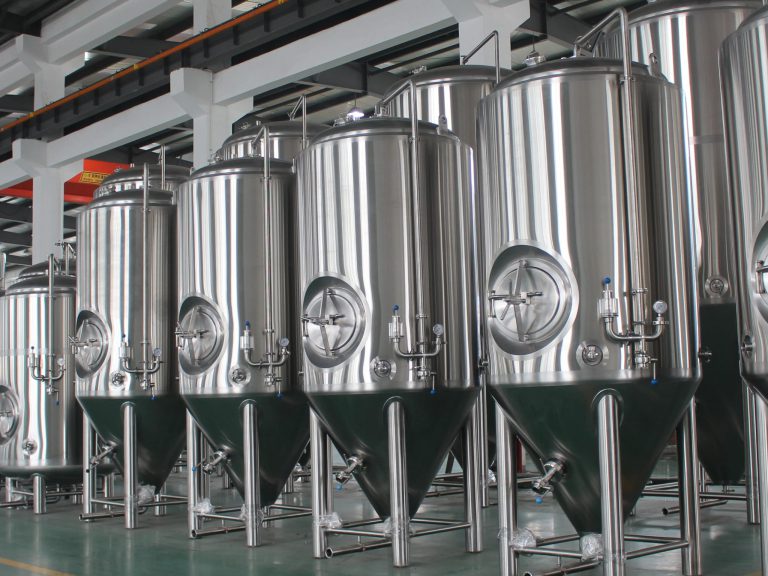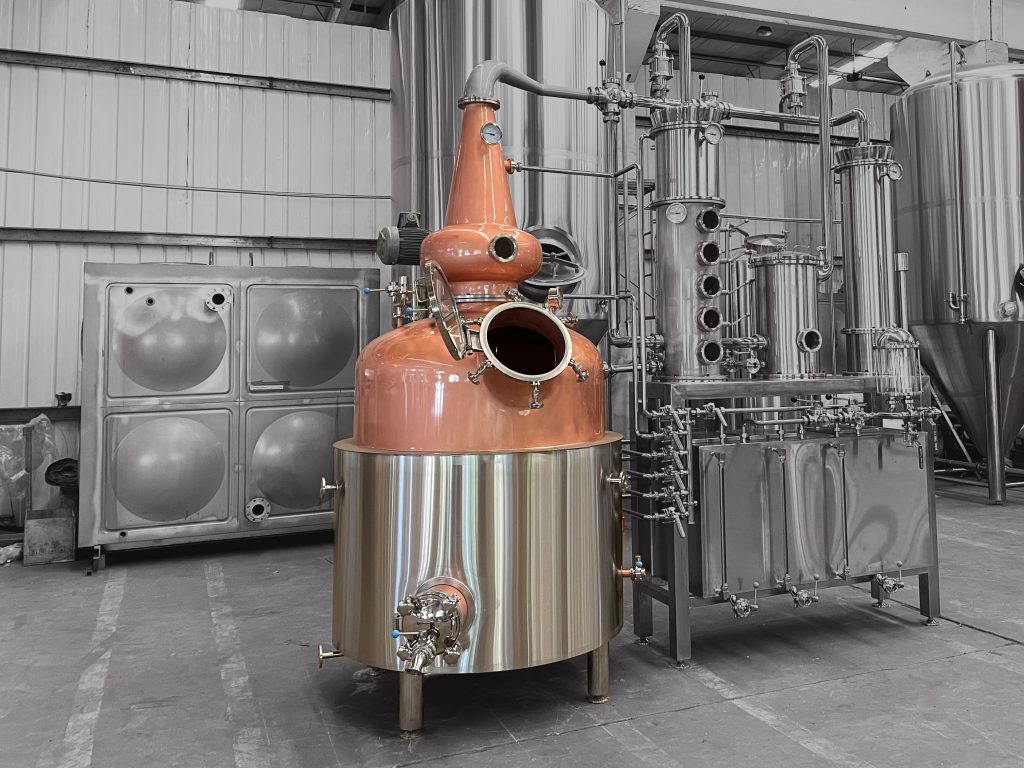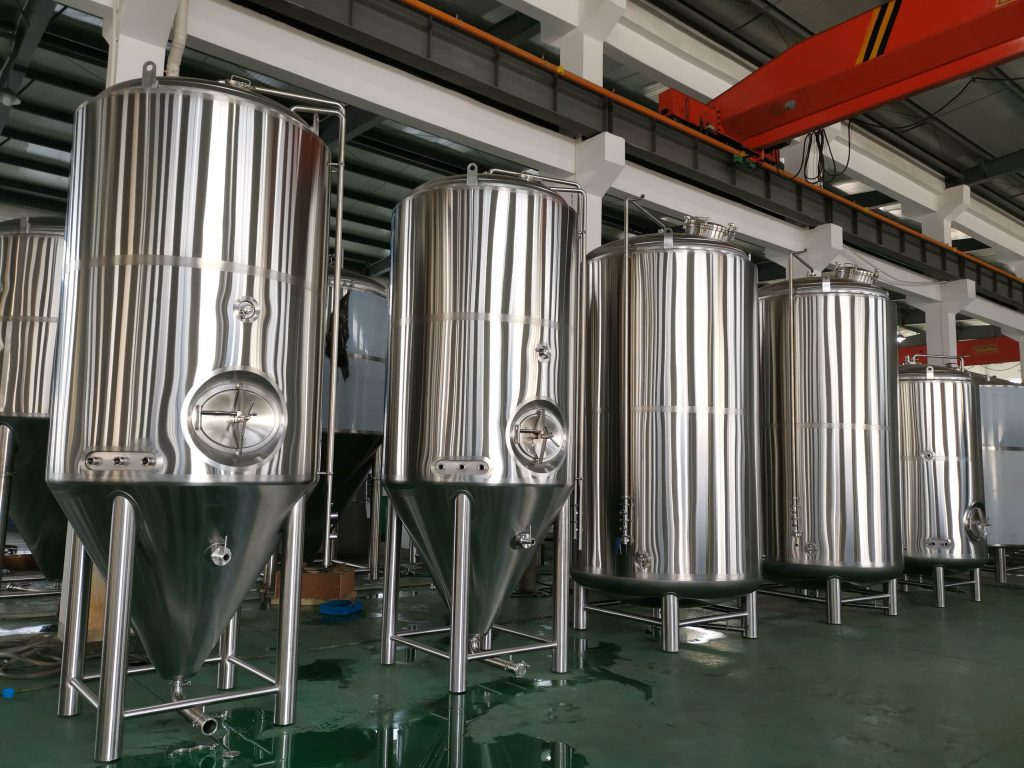Invoering

Thuis bier brouwen is niet zomaar een hobby; het is een ambacht dat immense voldoening kan geven. De sleutel tot het brouwen van uitzonderlijk bier ligt in het selecteren van de juiste apparatuur voor het maken van bier. Deze keuze beïnvloedt niet alleen het gemak van het brouwproces, maar ook de kwaliteit van het eindproduct. Of u nu een beginner bent of een ervaren brouwer die zijn opstelling wil upgraden, het begrijpen van de essentiële componenten en apparatuur kan het verschil maken. In deze uitgebreide gids verkennen we alles wat u moet weten over het kiezen van de juiste apparatuur voor het maken van bier voor uw brouwopstelling.
De basisprincipes van begrijpen Apparatuur voor het maken van bier
Voordat u zich verdiept in specifieke apparatuur, is het belangrijk om de fundamentele processen te begrijpen die bij het brouwen betrokken zijn. Bier brouwen omvat verschillende belangrijke stappen: maischen, koken, fermenteren, conditioneren en verpakken. Elk van deze fasen vereist gespecialiseerde apparatuur voor het maken van bier om een soepel en succesvol brouwproces te garanderen. Door de betekenis van elke stap te begrijpen, kunt u beter begrijpen waarom de juiste apparatuur van vitaal belang is.
Belangrijkste onderdelen van apparatuur voor het maken van bier
De essentiële componenten van bierbrouwapparatuur vormen de ruggengraat van uw brouwproces. Hier is een gedetailleerd overzicht van de kritieke apparatuur die u nodig hebt:
| Uitrustingstype | Doel |
|---|---|
| Brouwketel | Wordt gebruikt voor het koken van wort |
| Vergister | Waar fermentatie plaatsvindt |
| Vaten of flessen | Voor het verpakken van het afgewerkte bier |
| Luchtsluis | Voorkomt besmetting tijdens de fermentatie |
| Hydrometer | Meet soortelijk gewicht |
| Thermometer | Monitort temperatuur |
| Schoonmaakproducten | Zorgt voor de hygiëne van de apparatuur |
Als u deze componenten begrijpt, kunt u weloverwogen beslissingen nemen bij het samenstellen van uw brouwinstallatie.
De juiste brouwketel kiezen
De brouwketel is een fundamenteel onderdeel van de apparatuur voor het maken van bier en misschien wel een van de belangrijkste. Hier gebeurt de magie, door ruwe ingrediënten om te zetten in wort door te koken, wat smaken extraheert en het mengsel steriliseert. Dit zijn de belangrijkste factoren om te overwegen bij het selecteren van een brouwketel:
Grootte is belangrijk
De grootte van uw brouwketel is essentieel en moet aansluiten bij uw brouwambities. Als u van plan bent om batches van 5 gallon te brouwen, wordt een ketel met een capaciteit van ten minste 7,5 gallon aanbevolen om overkoken en verdamping mogelijk te maken. Overweeg voor grotere batches een ketel van 8 gallon of groter. Grotere ketels bieden ook de flexibiliteit om bieren met een hoge dichtheid te brouwen waarvoor mogelijk extra wortvolume nodig is.
Materiaalkeuzes
Het materiaal van uw brouwketel kan een aanzienlijke impact hebben op de prestaties en levensduur. De meeste brouwketels zijn gemaakt van roestvrij staal of aluminium.
- Roestvrij staal: Roestvrij staal staat bekend om zijn duurzaamheid en corrosiebestendigheid en is een favoriete keuze onder serieuze brouwers. Het is niet-reactief, wat betekent dat het geen ongewenste smaken aan uw bier zal toevoegen. Hoogwaardige roestvrijstalen ketels hebben vaak dikkere bodems om aanbranden te voorkomen.
- Aluminium: Hoewel ze lichter en over het algemeen betaalbaarder zijn, kunnen aluminium ketels reageren met zure ingrediënten, wat mogelijk de smaak van uw bier verandert. Als u voor aluminium kiest, zorg er dan voor dat het een goede geanodiseerde coating heeft om deze reactie te voorkomen.
De juiste fermentor selecteren
Zodra je je wort hebt gekookt, is de volgende stap de fermentatie, waarbij gist de suikers omzet in alcohol. De fermentor is cruciaal voor dit proces, waardoor de keuze van de fermentor een kritische is voor elke brouwer.
Soorten fermentoren
Fermentatieketels zijn er in verschillende vormen en uw keuze hangt af van uw brouwstijl en persoonlijke voorkeuren:
- Carboys: Meestal gemaakt van glas of plastic, bieden carboys uitstekende zichtbaarheid voor het monitoren van fermentatie. Glas krast minder snel, maar kan zwaarder en kwetsbaarder zijn.
- Emmers: Betaalbaar en eenvoudig te gebruiken, fermentatie emmers zijn perfect voor beginners. Ze missen echter mogelijk de zichtbaarheid van carboys en kunnen moeilijker grondig schoon te maken zijn.
- Conische fermentoren: Deze geavanceerde opties zorgen voor nauwkeurige fermentatiecontrole en eenvoudige verwijdering van gist, waardoor ze ideaal zijn voor serieuze brouwers. Ze kunnen ook meerdere fermentatieprocessen tegelijkertijd verwerken.
Volumeoverweging
Zorg bij het selecteren van een fermentor dat deze voldoende capaciteit heeft voor uw batchgrootte plus extra ruimte voor fermentatieactiviteit. Een standaard 6,5-gallon fermentor is geschikt voor de meeste 5-gallon batches, waardoor er voldoende headspace is om blow-off te voorkomen.
Essentiële hulpmiddelen voor het monitoren van fermentatie
Het monitoren van fermentatie is cruciaal voor het produceren van bier van hoge kwaliteit. Investeren in de juiste tools kan inzicht geven in uw brouwproces, zodat alles soepel verloopt.
Hydrometers en refractometers
Deze tools zijn essentieel voor het meten van de soortelijke massa van uw bier tijdens de fermentatie. Een hydrometer is een eenvoudig hulpmiddel waarmee u suikerniveaus kunt bijhouden, wat helpt bij het berekenen van het alcoholgehalte. Een refractometer kan meer precisie bieden en is met name handig voor all-grain brouwers die snel metingen moeten doen.
Thermometers
Het handhaven van de juiste temperatuur tijdens de fermentatie is essentieel voor de gezondheid van de gist en de ontwikkeling van de smaak. Met een goede thermometer kunt u de temperatuur van uw brouwsel nauwkeurig controleren. Digitale thermometers worden vaak gebruikt vanwege hun gebruiksgemak en snelle metingen, terwijl sommige brouwers de voorkeur geven aan wijzerplaatthermometers vanwege hun betrouwbaarheid.
Uw bier verpakken: vaten versus flessen
Zodra de fermentatie is voltooid, is het tijd om uw bier te verpakken. Deze fase is cruciaal voor het behoud van de kwaliteit en smaak van uw brouwsel, met twee primaire opties: vaten en flessen.
Vaten
Het fusten van uw bier kan talloze voordelen bieden, met name op het gebied van gemak. Hier zijn enkele voordelen van het gebruik van fusten:
- Gemak: Vaten zijn makkelijker te schenken en op te slaan dan flessen, vooral als je een bijeenkomst organiseert. Met een vat kun je snel bier tappen zonder het gedoe van bottelen.
- Koolzuur: Vaten kunnen een consistenter carbonisatieproces faciliteren. Het gebruik van een CO2-tank zorgt voor gecontroleerde carbonisatie, waardoor elke pint net zo lekker smaakt als de vorige.
Flessen
Bottelen blijft een populaire methode, vooral voor mensen die nog niet zo lang thuisbrouwen. Hoewel het arbeidsintensiever kan zijn, zijn er verschillende redenen om bottelen te overwegen:
- Kosten: Flessen kunnen vaak voordeliger zijn, vooral als je gebruikte flessen verzamelt. Dit maakt ze toegankelijk voor beginners.
- Verscheidenheid:Bij bottelen kunt u voor elke fles een eigen etiket maken. Dit is een leuke optie om cadeau te doen of om uw zelfgebrouwen bier te presenteren.
Vergelijkingstabel: Vaten vs. Flessen
| Functie | Vaten | Flessen |
|---|---|---|
| Koolzuurgemak | Hoog | Gematigd |
| Opslagruimte | Vereist meer ruimte | Minder ruimte nodig |
| Initiële kosten | Hogere initiële kosten | Lagere initiële kosten |
| Onderhoud | Vereist CO2-tank | Minimaal onderhoud |
Uw apparatuur reinigen en ontsmetten
Hygiëne is een hoeksteen van succesvol brouwen. Elke besmetting tijdens het brouwproces kan uw harde werk ruïneren, dus investeren in goede schoonmaakmiddelen is niet onderhandelbaar.
Aanbevolen schoonmaakmiddelen
Uw apparatuur voor het maken van bier moet de volgende schoonmaak- en ontsmettingsmiddelen bevatten:
- Borstels met borstelharen:Onmisbaar voor het reinigen van flessen, vaten en flessen, zodat er geen gistresten of andere resten achterblijven.
- Ster San: Star San is een populair ontsmettingsmiddel dat niet nagespoeld hoeft te worden onder hobbybrouwers. Het doodt effectief schadelijke bacteriën en wilde gisten, waardoor het onmisbaar is in elke brouwerij.
- Brouwerij Wassen: Een effectief reinigingsmiddel dat hardnekkige resten, olie en vuil van uw apparatuur verwijdert, zodat alles klaar is voor uw volgende brouwsel.
Door uw apparatuur schoon en hygiënisch te houden, beschermt u niet alleen uw bier tegen besmetting, maar verlengt u ook de levensduur ervan.
Geavanceerd Apparatuur voor het maken van bier voor ervaren brouwers
Zodra je de basis onder de knie hebt, kun je overwegen om te investeren in geavanceerde apparatuur voor het brouwen van bier. Zo kun je je brouwvaardigheden naar een hoger niveau tillen.
Temperatuurcontrolesystemen
Temperatuurcontrole is cruciaal voor het produceren van consistent, hoogwaardig bier. Geavanceerde temperatuurregelsystemen kunnen u helpen optimale fermentatieomstandigheden te behouden, wat leidt tot beter smakend bier. Kijk bij het selecteren van een temperatuurregelsysteem naar functies zoals:
- Thermostatische regelaars: Hiermee kunt u specifieke temperatuurbereiken instellen, waardoor u de fermentatieomstandigheden nauwkeurig kunt regelen.
- Verwarmingsmatten of -wikkels:Deze zijn vooral handig voor het handhaven van de fermentatietemperatuur in koudere omgevingen, zodat de gist tijdens het hele proces actief blijft.
Geautomatiseerde brouwsystemen
Voor degenen die serieus zijn over brouwen, kunnen geautomatiseerde systemen het proces vereenvoudigen en de nauwkeurigheid verbeteren. Deze systemen kunnen verschillende brouwparameters regelen, waardoor het risico op menselijke fouten wordt verminderd. Functies om te overwegen zijn onder andere:
- Geïntegreerde brouwsoftware: Maakt eenvoudig receptbeheer en brouwberekeningen mogelijk, waardoor het brouwproces wordt gestroomlijnd.
- Sensoren en monitoren:Met realtime monitoring van temperatuur, pH en zwaartekracht kunt u de brouwomstandigheden direct aanpassen, zodat u bij elke batch verzekerd bent van consistentie.
Veelvoorkomende fouten die u moet vermijden bij het kiezen Apparatuur voor het maken van bier

Het kiezen van de juiste apparatuur voor het maken van bier kan overweldigend zijn, vooral voor beginners. Hier zijn enkele veelvoorkomende fouten om te vermijden:
Uw installatie te ingewikkeld maken
Een van de grootste fouten die nieuwe brouwers maken, is beginnen met te veel geavanceerde tools en gadgets. Dit kan leiden tot verwarring en een steile leercurve. Concentreer u eerst op de basis: investeer in een solide brouwketel, fermentor en schoonmaakspullen, voordat u uw opstelling uitbreidt naarmate u meer ervaring en vertrouwen krijgt.
Kwaliteit verwaarlozen
Hoewel het verleidelijk is om te kiezen voor goedkopere apparatuur, kan investeren in hoogwaardige apparatuur voor het maken van bier u op de lange termijn geld besparen. Kwalitatieve apparatuur gaat langer mee en levert betere resultaten op, waardoor uw brouwproces aangenamer en minder frustrerend wordt. Beschouw het als een investering op de lange termijn in uw brouwavontuur.
Conclusie
Het juiste selecteren apparatuur voor het maken van bier is essentieel voor elke thuisbrouwer. De keuzes die u maakt, hebben niet alleen invloed op uw brouwervaring, maar ook op de kwaliteit van het bier dat u produceert. Door de basis te begrijpen en uw opties zorgvuldig te overwegen, kunt u een brouwopstelling creëren die aan uw behoeften voldoet en u helpt heerlijk bier te brouwen. Of u nu kiest om te beginnen met essentiële apparatuur of investeert in geavanceerde tools, het belangrijkste aspect is om te genieten van het brouwproces. Elk brouwsel is een kans om uw vak te leren en te verfijnen.
FAQ
V: Wat is het beste apparatuur voor het maken van bier voor beginners?
A:Voor beginners is een basisbrouwset met een brouwketel, fermentor, waterslot, hydrometer en schoonmaakspullen vaak voldoende. Deze essentials vormen een solide basis voor uw brouwavontuur.
V: Heb ik een vatensysteem nodig?
A:Hoewel een keggingsysteem handig is, is het niet noodzakelijk voor beginners. Bottelen is een volkomen acceptabele methode om je bier te verpakken, en veel nieuwe brouwers vinden het een geweldige manier om te beginnen.
V: Hoe belangrijk is hygiëne bij het brouwen?
A: Hygiëne is cruciaal bij het brouwen. Verontreiniging kan uw bier verpesten, dus zorg er altijd voor dat uw apparatuur schoon en ontsmet is voor gebruik. Deze eenvoudige stap kan later veel hoofdpijn voorkomen.
V: Kan ik gewone keukenapparatuur gebruiken om koffie te zetten?
A:Hoewel sommige keukenapparatuur gebruikt kan worden, is het het beste om te investeren in speciale apparatuur voor het maken van bier om optimale resultaten te garanderen. Speciale apparatuur is ontworpen om het brouwproces te weerstaan en consistente resultaten te leveren.
V: Hoe onderhoud ik mijn apparatuur voor het maken van bier?
A:Reinig en ontsmet uw apparatuur regelmatig na elk gebruik. Bewaar uw apparatuur op een droge, koele plek om schade te voorkomen en ervoor te zorgen dat deze in goede staat blijft voor uw volgende brouwsel.

